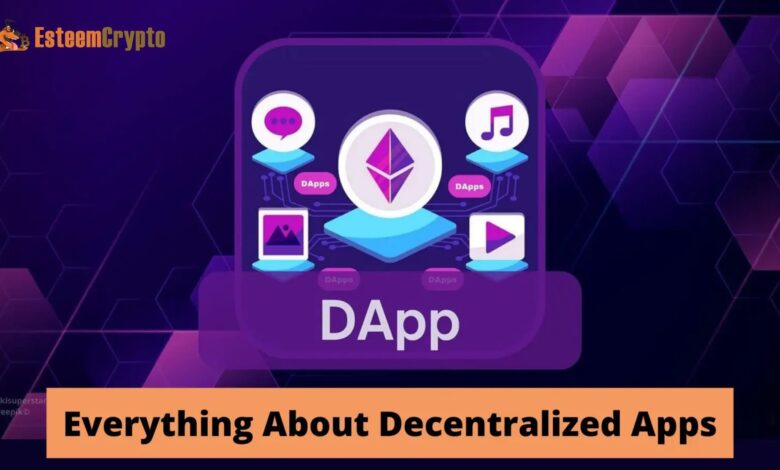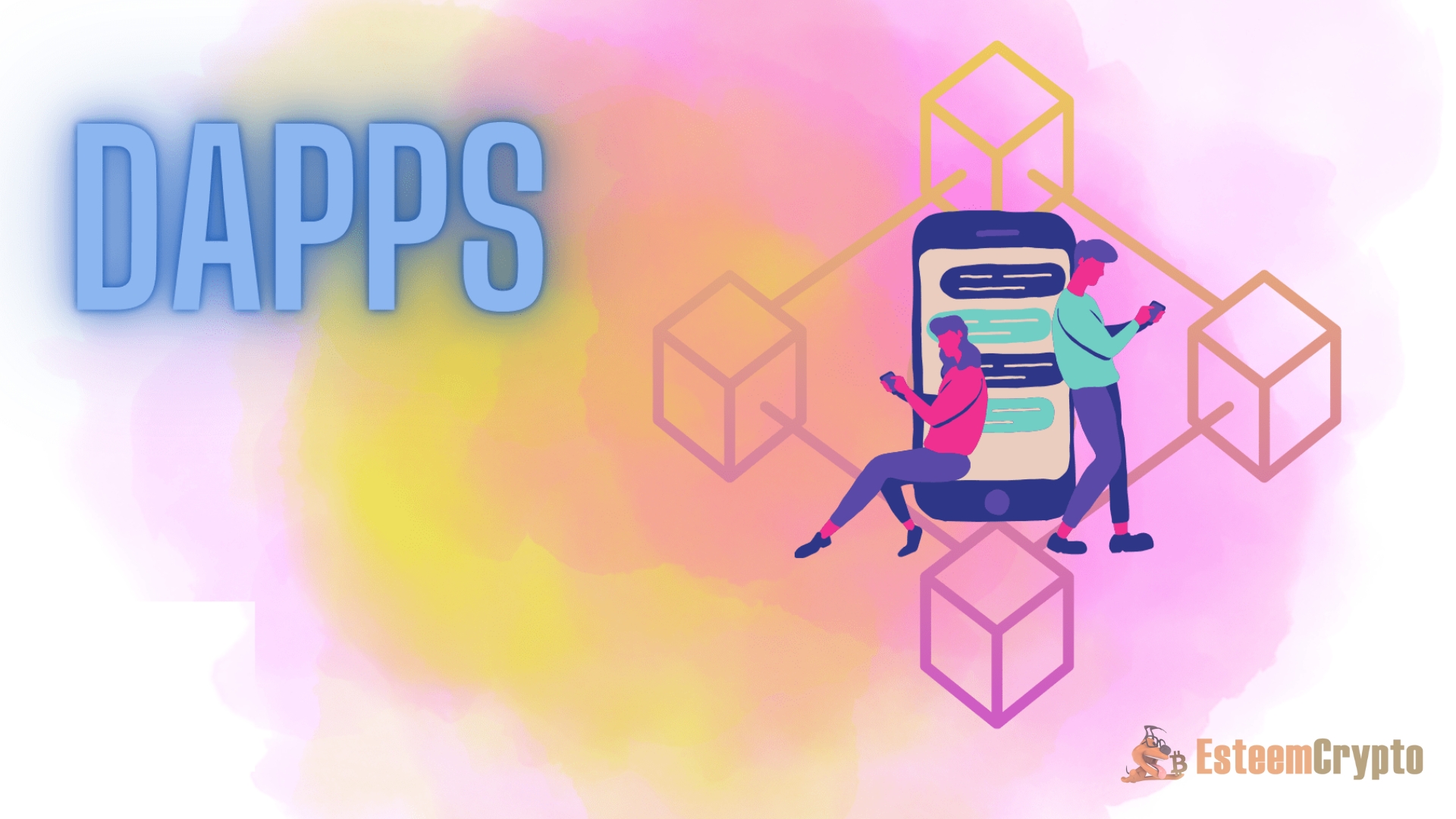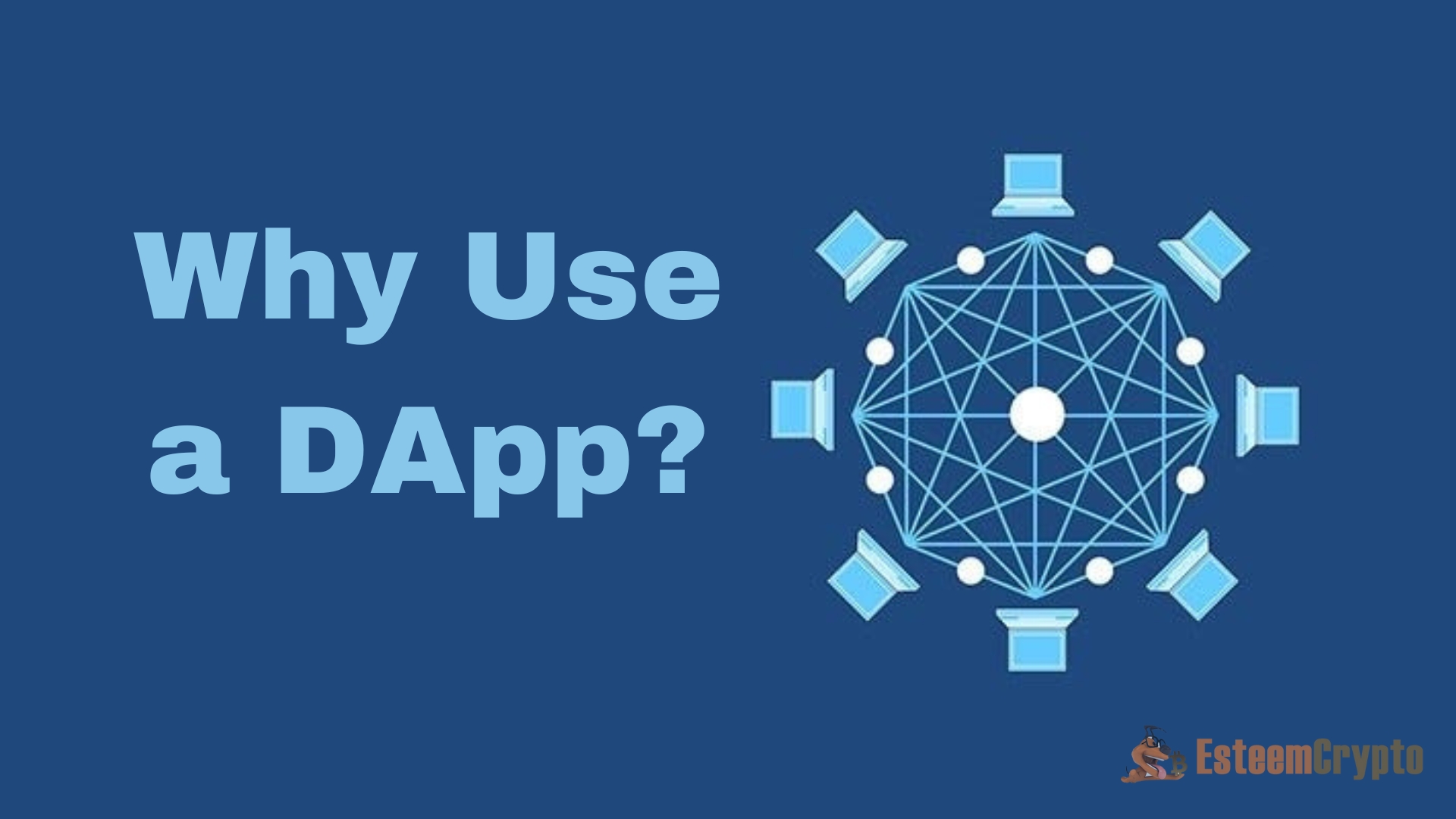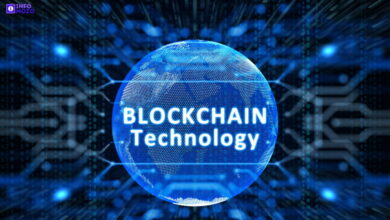What are DApps? Learn Everything About Decentralized Apps

What are DApps? Apps that have gained popularity on the Ethereum network can now be found in decentralized applications (DApps) backed by smart contracts on the blockchain. Users shouldn’t be able to tell them apart from regular programs, yet they offer many additional features.
Decentralized apps (DApps) usher in a new era of managing one’s own money. When people think of conventional finance, they typically picture lending, borrowing, savings, and related concepts. Banks and other financial institutions serve as the “power source” for each. However, many see blockchain and cryptocurrencies as the future wave in the financial sector. How can basic monetary operations, such as loan processing, function in a decentralized state?
History of DApps
Blockchain technology has progressed well beyond its original use case of digital currency transactions. However, Bitcoin was the first blockchain network. Vitalik Buterin and colleagues’ 2013 proposal of Ethereum focused on a far larger goal.
Buterin’s vision of a decentralized, user-controlled, blockchain-based internet would put consumers in charge rather than large businesses. To achieve this, Ethereum would power smart contracts—automated if-then statements. Rules and constraints were embedded into the coding of these contracts, making them immutable. This eliminates the need for centralized platforms and allows parties to transact directly.
Interestingly, research titled “The General Theory of Decentralized Applications, Dapps” was released in 2014 and defined the DApp. Contributors included industry veterans Shawn Wilkinson and David Johnston.
To further leverage the capabilities of the blockchain, layer-two DApps are typically constructed above layer one. They use tokens for interactions and are often thought of as protocols. One example of a layer-two DApp is a scaling solution that is built on top of Ethereum. To alleviate some of the strain on the main chain, transactions can be processed on this second layer before committing to the first.
The last tier of DApps is layer three, which is constructed on top of layer two and typically stores the data needed to communicate between layers two and three. Layer 1 and 2 scripts and application programming interfaces (APIs) may also be stored there. To illustrate, utilizing a layer-three protocol to house many layer-two decentralized applications (DApps) could enhance the user experience.
Various applications supported by a core blockchain are referred to as DApps throughout the study. Any application that satisfies the requirements above can be called a decentralized application (DAP), even if it only uses that foundational layer.
Why Use a DApp?
There are a lot of advantages to decentralization over applications that use a centralized network. The revolutionary smart contract greatly simplifies matters by eliminating the need for a third party. You may send money to anyone using an app like Venmo, but there’s a fee to transfer the money to your bank. It can take days for moving fiat to come, too. But with a decentralized app, you can send money with minimal to no fees. This helps consumers save money on fees and time because decentralized transactions are nearly quick.
Distributed applications also do not operate on centralized servers. Because they lack a physical object to attack, decentralized platforms are advantageous because they are immune to attacks. This ensures the network is always available and secure and prevents downtime. Accessing these programs is always feasible.
Virtually any sector, from gaming and healthcare to government and file storage, can benefit from decentralized applications. The use of DApps is thus essentially identical to that of conventional apps. The experience should remain unchanged, even though users reap the benefits of all the improvements made on the backend. Web 3.0 refers to this method of connecting with apps and decentralizing information.
On the other hand, users can decide who can view their information and for how long before sharing only the necessary details for things like a loan or a medical exam. Companies might pay for this access to make sure that users also benefit. The issue of trust also arises. It isn’t easy to trust anyone in this environment when even huge companies with supposedly great security release users’ login credentials.
Cons of DApps
The industry is trying to fix many big problems, but decentralized apps might mean a future without companies. One potential downside of decentralization is that it could slow down platform updates. After all, one side can easily change their software whenever they want. A DApp needs 75% agreement from the acting governance, even for a little bug fix. As consumers weigh the benefits and drawbacks of every enhancement, this could take several weeks or months.
Additionally, for DApps to function correctly, a reasonable user base is necessary. To engage with them, they require nodes, governance, and users. Many users aren’t getting the help they need, and obtaining DApps can be a real pain.
Digital application access may one day be as simple as downloading an app. However, users are currently limited to interacting through a DApp-supported browser, which requires them to download a wallet and pay the necessary cryptocurrency. Although someone with a strong grasp of technology should have no issues with this, most individuals will be completely confused.
DApps Around the World
As obvious as decentralized applications (DApps) are in the banking sector, they have the potential to revolutionize every market. Let’s take a bird’ s-eye view of this gaming, social media, and banking advantages.
Finance
Decentralized applications can facilitate transactions between borrowers and moneylenders. When people put their money into a bank, it pays them interest. More money saved means more money the bank can lend, which means more interest for everyone involved. However, as a centralized institution, the bank takes a larger percentage than lenders would prefer to store their money.
With a decentralized application (DApp), there is no intermediary to pay; thus, lenders keep all the interest. They can earn tokens from the platform they use to lend on and have more control over the loans.
Borrowers have greater control over the interest rate and how long it takes to pay it. Some platforms let borrowers take their time paying off interest—months or even years—as long as they meet a certain payment level. To ensure that both sides are treated fairly, the borrower can negotiate interest rates with the lender. Finally, because of smart contract technology, the proceeds can happen instantly. The confirmation process becomes more time-consuming and costly when attorneys and other third parties are uninvolved.
Social media
Using social media DApps can be incredibly beneficial for users. First, everyone can say whatever they want because no one censor’s messages. However, the community can vote to remove problematic posts if they arise.
Earnings for influencers can also increase. Most of the company’s revenue comes from highly successful tweets on more conventional channels like Twitter. From all the people that visit the site, it makes money from ads, but the creator gets… well, nothing. Users can run advertising and earn their entire earnings in social media DApps that include an integrated tipping system using its currency instead of a firm receiving a share instead of a firm receiving a share.
Gaming
Digital application use cases in gaming have always been intriguing. At the moment, players can spend a ton of time and money developing a character in a game, and then it just sits there and dies when they log out. Decentralized applications offer a more intriguing solution in terms of value. Consider the game CryptoKitties. In this game, players can own a cat—its tokenized form. If cared for correctly, that cat will mature into an asset as it ages. Then, if someone is willing to pay, the user can sell the cat for whatever price.
On top of that, certain felines can breed with other felines, which could result in an even more uncommon and precious cat. Cats are tokenized pets that players can trade, gather, and do anything they want. As a result, the time they put in becomes worthwhile. Think about the potential of that idea in a fully realized game with hours of gameplay—there aren’t many at the moment. Maybe one day, we’ll be able to game full-time.
Voting and governance
Voting may be a frustrating ordeal for most people. Citizens without adequate accommodation or those experiencing other hardships may not be able to complete all of the validation processes. Not to mention other forms of illegal interference.
A voting DApp can make the process accessible by utilizing smart contracts. In essence, the community can vote upon a set of suggestions. Then, they can decide how long users have to “stake” their tokens—for example, 24 hours—to cast their vote. Anyone can now participate, and they can even vote anonymously if they so want.
A decentralized network ensures that votes cannot be altered or tampered with. Because of this, more individuals will vote than ever because smart contracts can incentivize voters with a relevant token.
Fundraising and advertising
Many people use ad blockers while surfing the web. This is frustrating for websites that rely on advertising to make money, but it’s understandable, given how annoying commercials can be. A browser DApp can fix this.
Users can earn cryptocurrency while they surf the web using an integrated ad and tracker blocker. The option to enable contributions is now available to users as they discover content providers and websites they enjoy. In other words, the more time a user spends on a site, the more money it makes. Users can benefit even more by enabling long-term advertisements on those sites. The goal here is to maintain privacy. Users can protect their information by choosing who can track them while supporting needy platforms. This can benefit us both.




